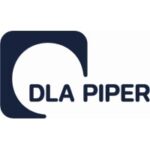-
How active is the securitisation market in your jurisdiction? What types of securitisations are typical in terms of underlying assets and receivables?
New Zealand has a relatively mature securitisation market. According to the Australian Securitisation Forum, as of January 2025, the number of securitised issuances in New Zealand since 2017 has been approximately NZ$11 billion.
While residential mortgages are the most commonly securitised assets, other assets including automobile loans, equipment leases, personal loans and credit card receivables are also typical assets to be securitised in New Zealand.
-
What assets can be securitised (and are there assets which are prohibited from being securitised)?
There are no assets that are prohibited from being securitised, although from a practical perspective, the scalability of certain assets may limit an entity’s ability to securitise the assets.
Please refer to our answer to question (1) for classes of assets that are typically securitised.
-
What legislation governs securitisation in your jurisdiction? Which types of transactions fall within the scope of this legislation?
New Zealand does not have a specific legislative framework for securitisation transactions (although specific legislation is in place for covered bond transactions). Instead, the regulatory environment comprises an array of laws and regulations. We list some of the key pieces of legislation below (this is not an exhaustive summary):
- the Trusts Act 2019, which is the primary legislation governing trusts, including those used in securitisation;
- the Financial Markets Conduct Act 2013 (FMCA), which governs how financial products, such as those arising from securitisations, are offered and issued in New Zealand and obligations applicable to such issuances;
- the Financial Service Providers (Registration and Dispute Resolution) Act 2008, which requires certain parties involved in a securitisation to register on the Financial Service Providers Register;
- the Fair Trading Act 1986 (FTA), which prohibits traders from undertaking conduct that is misleading or deceptive, making a false representation or engaging in unfair practices; it also restricts the use of unfair contract terms in certain standard form contracts, provides protections against unsafe goods and services and provides for consumer information disclosure;
- the Anti-Money Laundering and Countering Financing of Terrorism Act 2009 (AML/CFT Act); and
- the Privacy Act 2020 (PA), which governs the collection, storage, use or disclosure of personal information about identifiable individuals.
Further, the Credit Contracts and Consumer Finance Act 2003 (CCCFA) is also relevant in securitisations where the securitised receivables are “consumer credit contracts”. Subject to certain narrow exceptions, most forms of consumer lending whereby credit is provided to individuals is covered by the term “consumer credit contract”. As such, securitised assets such as mortgages, personal loans, vehicle loans or credit cards, will generally be caught by the CCCFA. With respect to securitisations that relate to non-consumer receivables, the CCCFA has a significantly narrower application.
In respect of the taxation of securitisation arrangements, the Income Tax Act 2007 (ITA), the Goods and Services Tax Act 1985, the Stamp and Cheque Duties Act 1976 and the Tax Administration Act 1994 are relevant.
The ITA contains a specific regime that allows securitisation entities that are “debt funding special purpose vehicles” (broadly, on balance sheet securitisation entities) to be treated as transparent for tax purposes. Other securitisation arrangements are structured as, and taxed as, complying trusts under the trust tax rules in the ITA.
-
Give a brief overview of the typical legal structures used in your jurisdiction for securitisations and key parties involved.
In New Zealand, securitisations are structured using a special purpose vehicle (SPV) entity which can be a trust, limited partnership or company. As the SPV entity is almost always a trust, for the purposes of answering this question, we will focus on trust SPVs.
At the centre of the structure is the trust that will issue securities to fund the purchase of the assets from the securitising entity. The key parties involved are:
- the sponsor (or seller/originator) of the securitisation that originates assets that can be securitised into the trust;
- the trustee, who holds legal title to the securitised assets and is the issuer of the securities;
- the security trustee, who holds security that has been granted over the securitised assets for the benefit of the secured creditors of the trust;
- the trust manager, typically the sponsor (or its affiliate) appointed to oversee the day-to-day operations of the trust;
- the servicer, typically the sponsor (or its affiliate) who manages the administration of the securitised assets; and
- the investors who purchase securities issued by the trust.
-
Which body is responsible for regulating securitisation in your jurisdiction?
Just as there is no specific legislative framework for securitisation transactions in New Zealand, there is no single body that is responsible for regulating securitisations in New Zealand.
Instead, depending on the types of entity involved (including the securitising entity) and the asset class of the asset being securitised, there could be a number of supervisors involved. These include:
- in respect of the CCCFA, the Commerce Commission (although later in 2025, oversight will be transferred to the Financial Markets Authority (FMA) which licenses and regulates the financial market participants involved in securitisations);
- in respect of the FTA, the Commerce Commission;
- in respect of the PA, the Office of the Privacy Commissioner;
- in respect of the AML/CFT Act, there are currently three supervising agencies which are (i) the Reserve Bank of New Zealand (RBNZ) which supervises banks (amongst others), (ii) the FMA which supervises issuers of securities and financial advisers (amongst others) and (iii) the Department of Internal Affairs (DIA) which supervises non-financial businesses (amongst others). However, during 2025 there will be a transition to a single supervisor, being the DIA;
- to the extent any entity involved in the transaction is a deposit taking institution (either as a registered bank or non-bank deposit taking entity), these entities would be subject to prudential regulation by RBNZ pursuant to either the Banking (Prudential Supervision) Act 1989 or the Non-Bank Deposit Takers Act 2013 (both of which are in the process of being repealed and replaced with the Deposit Takers Act 2013 (DTA)). The scope of the DTA does not currently encompass non-deposit taking wholesale-funded entities (such as the institutions that utilise securitisation as a means of funding), although the DTA includes ministerial powers to declare persons or classes of persons as deposit takers for the purposes of the Act; and
- in respect of the taxation aspects of securitisation transactions, the Inland Revenue Department, being New Zealand’s main taxing authority.
-
Are there regulatory or other limitations on the nature of entities that may participate in a securitisation (either on the sell side or the buy side)?
In respect of buy side entities, only wholesale investors regulated under the FMCA (or the equivalent in respect of offshore investors) will participate in a securitisation in New Zealand.
In respect of sell side entities, this is a sponsor specific question and would need to be considered on a case-by-case basis depending on the nature of the entity and if there is any specific industry related legislation that could prevent the entity from participating in a securitisation. However, as a general statement, there are no specific classes of entities that are prohibited as a matter of law from participating in a securitisation.
Please also refer to our answer to question (5).
In respect of the securitisation vehicle itself, where the securitisation does not utilize the flow through tax regime for debt funding special purpose vehicles, the securitisation vehicle is usually structured as a “complying trust”. This structure is adopted to facilitate tax neutrality. A complying trust is a trust that is settled by a New Zealand resident, which has a New Zealand resident trustee and which is compliant with its tax obligations. It is important that the securitisation vehicle is not classified as a “unit trust” (which is taxed as a deemed company). For this reason, securitisation vehicles in New Zealand tend to have a single beneficiary with no unitization of the beneficial interest.
Where the securitisation utilizes the flow through tax regime for debt funding special purpose vehicles, the securitisation vehicle can in theory be structured as a trust, unit trust or a company. However, as a matter of practice, most securitisation vehicles that utilize the flow through tax regime are structured as complying trusts, so that there is a tax neutrality “backstop” in the event that eligibility for flow through treatment is subsequently lost.
-
Does your jurisdiction have a concept of “simple, transparent and comparable” securitisations?
Unlike in certain jurisdictions such as in Europe and the UK where “simple, transparent and comparable” may be seen to encourage investor confidence because of the homogeneity of the securitised assets, more comprehensive disclosure of information on the securitised assets and criteria to allow for more straightforward comparison of securitisation of the securitised assets, there is no equivalent process that is undertaken in the New Zealand securitization market.
That said, there are market conventions which are usually followed. The assets securitised are usually conservative products and there are certain regulations (as discussed in question (3) above) which protect underlying borrowers and consumers, amongst others, which in turn contribute, to some extent, to the “simple, transparent and comparable” nature of securitisations in New Zealand.
-
Does your jurisdiction distinguish between private and public securitisations?
No, all securitisations in New Zealand are private. This is on the basis that “public securitisations” are taken to mean transactions which involve (i) the publication of a prospectus in compliance with certain prospectus regulations; and (ii) the provision of information available through a securitisation repository. There are no securitisations in New Zealand that meet these requirements.
-
Are there registration, authorisation or other filing requirements in relation to securitisations in your jurisdiction (either in relation to participants or transactions themselves)?
In relation to participants, please see our answers to questions (3), (5) and (6) above.
Further, under the Overseas Investment Act 2005 (OIA), consent may need to be obtained from the Overseas Investment Office (OIO).
OIA
The OIA provides for New Zealand’s foreign direct investment regime. The OIA requires “overseas persons” to obtain consent before acquiring interests in “sensitive land” or “significant business assets” in New Zealand. For these purposes:
- overseas persons include bodies corporate, trusts or other entities which are domiciled overseas or are owned or controlled more than 25% by non-New Zealand individuals or entities;
- sensitive land includes certain residential land, rural land or other land with special features and an “interest” in such land includes a mortgage or other security interest; and
- significant business assets involve the acquisition of assets used in carrying on business in New Zealand for consideration of more than NZ$100 million or a more than 25% ownership or control interest in securities of an entity for consideration of more than NZ$100 million or where the entity holds gross assets of more than NZ$100 million.
Accordingly, the acquisition by overseas persons of security interests in New Zealand property can, absent the application of an exemption, trigger a consent requirement under the OIA. If triggered, consent must be obtained from the OIO before the transaction completes.
However, many securitisation transactions are exempted from the provisions of the OIO. Exemptions may apply for entering into “permitted security arrangements”, acquiring a portfolio of “permitted security arrangements”, or acquiring a receivable (i.e. an instrument that is solely a right to be paid money). A permitted security arrangement is one that:
- requires that the property be retransferred to the original transferor or extinguished on the payment or performance of the obligation; and
- is entered into by the parties in good faith and in the ordinary course of business; and
- is not entered into with the intention of avoiding the application of the OIA.
In practice, the exemptions will apply to most securitisation transactions (and have been designed to do so). However, there are exceptions. For example, operating leases do not fall within the definition of permitted security arrangements and securitisation transactions involving operating leases may require consent. It is recommended that specialist OIA advice is obtained ahead of entering into a securitisation transaction involving New Zealand land or assets worth more than NZ$100 million.
In addition, there may be certain tax registration and filing requirements.
Tax
The tax registration and filing obligations in relation to securitisations differ depending on whether the securitisation vehicle utilizes the flow through tax treatment for debt funding special purpose vehicles or is taxed as a complying trust. Where the flow through treatment is applied, the securitisation entity is not a taxpayer and it has no tax registration or filing obligations. The originators of the securitisation entity are liable to tax on the profits of the securitisation entity and are responsible for necessary income tax, GST and other tax filing and registration obligations. The trustee of a securitisation trust that does not apply the flow through tax treatment must obtain an IRD (tax file) number and file annual income tax returns (although the returns will typically be nil returns, with all profit taxable to the beneficiary of the trust). The trustee will also obtain an exemption from domestic withholding tax (known as RWT-exempt status), may register for GST purposes and file regular GST returns, and may make certain registrations to apply the approved issuer levy regime to interest payments on notes held by non-resident noteholders.
There are also filings required in relation to the underlying assets and participants. We discuss these below.
Personal Property Securities Act 1999 (PPSA)
The PPSA provides a regime for the creation, attachment and perfection of security interests in personal property. To perfect most security interests over personal property and determine priority of claims as against other creditors, a secured party must register a financing statements on the Personal Property Securities Register (PPSR). The financing statement contains details of the secured party, the debtor and the secured property (no transaction documentation forms part of this registration).
In the context of a securitisation, the transfer of accounts receivable (among other circumstances) gives rise to a deemed security interest granted by each seller/assignor in favour of the purchaser/assignee over the transferred receivables. This deemed security interest should be perfected by registration on the PPSR. Furthermore, registration on the PPSR is also required by the security trustee (appointed on behalf of the secured creditors of a securitisation entity) over the trustee of the securitisation entity with respect to the trust assets.
It is possible to register a financing statement at any time (including prior to entry into the receivables purchase agreement). Given that the time of registration will ultimately determine priority, this step should be completed as soon as possible and prior to funding. In very general terms, a prior registered security interest over the same property will defeat an interest, including that of a subsequent purchaser, which is registered later in time. While failure to register does not itself invalidate the assignment as between the purchaser and the seller, as outlined above, it may affect the priority of the purchaser’s claim to the assigned assets.
A financing statement will automatically expire five years after the date of registration. To maintain the original priority, the financing statement must be renewed before it expires.
It is also possible to perfect a security interest in certain types of personal property including marketable debt securities and chattel paper by taking physical possession of the collateral if they take a physical form. If the securitised asset falls into one of these classes, it will be important to consider perfecting the security interest by taking possession as well as registering a financing statement on the PPSR.
CCCFA
The CCCFA prescribes certain requirements in relation to the sale of receivables. Under the CCCFA, any transfer of rights by a creditor or seller under a consumer credit contract (whether by assignment or operation of law) requires disclosure to the underlying debtors/guarantors of certain information relating to the identity of the assignee/purchaser and their contact and regulatory compliance details. Such disclosure must be made within 10 business days following the transfer.
However, a specific exemption to the disclosure requirement applies to securitisations where it can be demonstrated that certain conditions have been satisfied including that either (i) the seller or a related party has been contractually appointed by the purchaser to collect the payments under the receivables contracts, manage such contracts and deal with the underlying debtors/guarantors and the underlying debtors/guarantors have been provided with the contact and regulatory compliance details of such party prior to the transfer; or (ii) the assignee/purchaser was already collecting the payments under the receivables contracts, managing such contracts and dealing with the underlying debtors/guarantors and the underlying debtors/guarantors have been provided with the assignee’s/purchaser’s contact and regulatory compliance details.
In addition, a lender providing consumer credit contracts will need to be certified by the Commerce Commission. Later in 2025, this certification obligation will transition to a licensing regime and there will likely be a transfer of responsibility for enforcing the CCCFA from the Commerce Commission to the FMA. However, lenders already certified under the CCCFA (or currently exempt) will be deemed licensed under the FMCA.
Property Law Act 2007 (PLA)
Under the PLA, notice of the assignment needs to be given to the obligor to fully perfect the assignment. In the securitisation context however, giving notice of the assignment at the outset of the transaction is not usual. The trustee will rely on specific title perfection events which give it the right to take this final perfection step if certain trigger events occur. In many cases, this is supported by a title perfection power of attorney.
Aside from the above, in relation to mortgages over real property, registration of the mortgage transfer at the Land Information New Zealand is required by the Land Transfer Act 1952.
-
What are the disclosure requirements for public securitisations? How do these compare to the disclosure requirements to private securitisations? Are there reporting templates that are required to be used?
There are no public securitisations in New Zealand. Please see our answer to question (8) above.
-
Does your jurisdiction require securitising entities to retain risk? How is this done?
There is no requirement under New Zealand law for securitising entities to retain risk. However, the market convention is that the sponsor will usually retain risk. This is most commonly achieved by the sponsor (or a related entity) retaining the most junior tranche of the notes that are issued as part of the securitisation.
In addition, many participant banks and potential investors in the New Zealand market will be subject to foreign risk retention regimes.
-
Do investors have regulatory obligations to conduct due diligence before investing?
As a matter of New Zealand law, an investor is not subject to any regulatory obligations to conduct due diligence before investing however an offshore investor may be subject to relevant obligations in their home jurisdictions.
-
What penalties are securitisation participants subject to for breaching regulatory obligations?
We have not attempted to outline below all penalties which participants may be exposed to as that would depend entirely on the nature of the specific breach. However, the breaches that are most likely relevant are as follows.
If an offer of financial products under a securitisation is made to an investor in New Zealand, the issuer would need to comply with:
- the fair dealing provisions set out in Part 2 of the FMCA (which prohibits statements that are false or misleading (including by omission) or which are unsubstantiated); and
- the offer provisions set out in Part 3 of the FMCA (which require a product disclosure statement and register entry to be prepared in compliance with that Part 3 and given to the retail investor) if the offer is made to a retail investor in New Zealand (being any person who is not a wholesale investor).
Contravention of the fair dealing provisions or the offer provisions gives rise to civil liability under the FMCA and can result in pecuniary penalties limited to the greater of: (a) the consideration for the relevant transaction; (b) 3 times the amount of the gain made or loss avoided; and (c) NZ$1 million in the case of an individual or NZ$5 million in any other case. Criminal liability may also under the FMCA for any person who (a) makes, or authorises the making of, a statement in a document that is false or misleading in a material particular knowing it to be false or misleading or (b) knows that, or is reckless as to whether, the offer required a product disclosure statement and register entry to be prepared in compliance with Part 3 of the FMCA.
There could be penalties and other enforcement consequences under the CCCFA as well, depending on the nature of the breach of each regulatory obligation. This could include compensatory damages, statutory damages, pecuniary penalties, infringement fees and other civil remedies.
A breach of the OIA could attract a retrospective filing requirement and associated administrative penalty, or, for more serious breaches, divestment orders, pecuniary penalties of up to $10 million or criminal charges with 12 months imprisonment or a $300,000 fine for an individual.
New Zealand tax legislation imposes interest and/or penalties on non-compliant taxpayers. These impositions could apply to parties to a securitisation transaction, if they did not comply with their tax obligations.
Further, if a registered bank is involved in a securitisation and it has not complied with its conditions of registration, the RBNZ can recommend to the government to cancel the registered bank’s registration and impose criminal penalties.
-
Are there regulatory or practical restrictions on the nature of securitisation SPVs? Are SPVs within the scope of regulatory requirements of securitisation in your jurisdiction? And if so, which requirements?
In general, securitisation SPVs (in the nature of trusts) are within the scope of the general regulatory requirements applicable to securitisation in New Zealand.
Please refer to our answers to questions (3), (4) and (5) above.
-
How are securitisation SPVs made bankruptcy remote?
Securitisation SPVs in New Zealand are made bankruptcy-remote primarily by structuring them as trusts (also see our answer to question (4) above), which are legally independent from their originators. The SPV and its assets are de-linked from the insolvency risk of the originator and other parties to the securitisation structure.
The assets must be transferred to the SPV by way of a true sale so that the originator of those assets should not have recourse to them on its insolvency.
In addition, the documentation for the securitisations will include clauses providing that recourse to the SPV is limited to the assets held by it and that no insolvency proceedings may be taken against the SPV.
-
What are the key forms of credit support in your jurisdiction?
The key forms of credit support in New Zealand are, amongst others, subordinated debt, over-collateralisation and reserve accounts. Please see the brief description of each of them below.
Subordinated debt is the creation of two or more tranches of securities for investors of different levels of risk appetites to invest in. A subordinated tranche of notes will provide a lower level of credit protection to an investor of such subordinated tranche of notes however the investor should benefit from a higher return. On a rated transaction, a subordinated tranche of notes will be assigned a lower credit rating as compared to a senior tranche.
Over-collateralisation means the holding of securitised assets that exceeds the value of the debt that is issued, enhancing the creditworthiness of the securities issued by the trust.
Reserve accounts are accounts set aside to absorb any losses that may occur on the underlying assets of a securitisation, acting as a safety net against unexpected demands or losses, and which are typically funded with a proportion of the cash flows from the underlying assets.
-
How may the transfer of assets be effected, in particular to achieve a ‘true sale’? Must the obligors be notified?
True sale is achieved when there is (1) an absolute transfer of property rather than a transfer by way of security; and (2) consideration (i.e. payment of a price). See further in our response to question (18) below.
As a general rule, notification of the obligor is not required to achieve ‘true sale’.
For completeness, even if notification is delivered to the obligor, there is no requirement as to form in relation to that notice. For a legal assignment to be complete, the notice must be in writing and while there is no time limit beyond which notice is ineffective, the timing of delivery of notice will be relevant insofar as it affects the rights of third parties.
In addition, no notification requirements should arise under the PPSA, CCCFA and PLA as discussed below.
PPSA
Under the PPSA, registration of a financing statement acts as notification of the purchaser’s deemed security interest in the sold receivable and the security trustee’s security interest over the trust assets (on behalf of the secured creditors of the SPV entity). No additional notice is required under the PPSA.
CCCFA
Failure to notify an obligor of a transfer in accordance with the CCCFA could give rise to a claim for statutory damages or other discretionary relief.
Assuming there is no contractual agreement to the contrary, as a matter of New Zealand law, the consent of the obligor is not required where the seller only transfers its rights against the obligor.
Where rights and obligations are to be transferred, consent of the obligor will be required.
However, as discussed in our answer to question (9) above, there is a specific exemption to the disclosure requirement that applies to securitisations.
PLA
The PLA imposes separate but overlapping requirements in relation to buying and selling property, mortgaging property and leasing. The PLA contains specific provisions which govern the legal and equitable assignment of “things in action” which includes a ‘right to receive payment of a debt’.
Under section 50 of the PLA, rights under a receivable may be legally assigned without notice being given to the obligor. The assignment, in writing, passes all rights of the assignor to the assignee, subject to any equities arising before the debtor has actual notice of the assignment. Although the giving of notice is not mandatory, under section 51 of the PLA, if a debtor does not have actual notice of the assignment:
- the underlying debtor can discharge its debt by payment to the assignor (not the assignee); and
- if the assignor purports to assign its interest to a third party (i.e. the subsequent assignee) in addition to having already assigned its interest to a party (i.e. the original assignee) and that subsequent assignee gives notice to the underlying debtor, the rights of the subsequent assignee have priority over the rights of the original assignee.
-
In what circumstances might the transfer of assets be challenged by a court in your jurisdiction?
When determining whether a transaction is a true sale (in other words, where the assets have been transferred) rather than a loan or security arrangement, a New Zealand court will have regard to both the intention of the parties and the form of transaction but, more particularly, look to the substance of the transaction, the position of the parties and the entire circumstances under which the transaction came about. This is irrespective of the label given to the transaction by the parties.
For example, in respect of the assignee’s/purchaser’s enjoyment of a property, if it is apparent that there are unusual limits upon the rights of the purchaser (such as a requirement to sell the property back to the seller or a stipulation that any interest earned remains the property of the seller), it is likely the beneficial ownership has remained with the seller and the transaction cannot be characterized as a true sale.
If the transaction is determined not to be a true sale, there is a risk that those assets will, on the seller’s insolvency, be considered part of the seller’s assets and will therefore be available to the seller’s creditors.
The characterization of the transaction for accounting purposes will be determined by separate rules established under GAAP. It is possible that the accounting treatment of the transaction and the legal treatment of the transaction may differ.
In addition, in many cases, rights arising from the assignment of a receivable will be “deemed security interests” in terms of the PPSA. As such, even if the transaction provides for an absolute legal assignment, the assignee’s entitlement to the receivable and any proceeds will be determined in accordance with the priority regime in the PPSA and the legislation applicable to the relevant insolvency process.
Further, an insolvency official may rescind or reverse transactions. For example, section 297 of the CA provides that if a company enters into a transaction within two years of the application to put the company into liquidation, and the company is insolvent at the time of the transaction (or as a result of the transaction), the liquidator may recover from the counterparty any difference in value between what the company provide and what it receives.
If there is a dispute as to whether the receivable has been assigned, the insolvency official or the debtor may be able to obtain interim orders to prevent the purchaser from exercising its rights pending resolution of the dispute.
-
Are there data protection or confidentiality measures protecting obligors in a securitisation?
Yes, the PA regulates the collection, storage, use and disclosure of personal information concerning natural persons and it restricts the purposes for which personal information about individuals can be used or communicated.
The PA is New Zealand’s primary privacy and data protection legislation. It imposes thirteen “information privacy principles” (IPPs) in relation to the collection, storage, use and disclosure of “personal information” (being information about identifiable individuals). As a summary, some of the key IPPs are:
- an entity (or “agency” in the language of the PA) must only collect personal information for a lawful purpose connected with a function or activity of the company, and only to the extent necessary for that purpose;
- the agency should take reasonable steps to inform the individual of various specified matters, including the fact that personal information is being collected, the purposes for which the information will be used, and other similar matters (in practice, this requirement is typically met by covering these items in a privacy policy; and
- the agency should protect personal information with reasonable safeguards that prevent loss, unauthorised access, use, modification, or disclosure.
In addition, in the event of a “notifiable privacy breach” (in brief, a breach of privacy is likely to cause serious harm to any affected individual), an agency will need to notify the Office of the Privacy Commissioner and affected individuals as soon as possible.
In general, the parties to a securitisation in New Zealand need to ensure that the privacy policies of the originating entities disclose to borrowers and guarantors that collected information may be disclosed to, and used by, assignees.
-
Is the conduct of credit rating agencies regulated?
As a matter of New Zealand law, the conduct of credit rating agencies is not separately regulated in New Zealand. However, these credit rating agencies may be regulated in other jurisdictions in which they operate.
-
Are there taxation considerations in your jurisdiction for originators, securitisation SPVs and investors?
Securitisation entities are intended to be income tax neutral. This is achieved by the entity applying the flow through tax regime for debt funding special purpose vehicle, or through the trust being a complying trust for tax purposes that automatically vests its taxable income in the trust beneficiary (such that the taxable income is taxed as beneficiary income in the hands of the beneficiary). The key tax considerations that arise in relation to income tax neutrality include eligibility for the flow-through tax regime, and if that regime does not apply, the extent to which taxable income may fail to vest in the beneficiary (e.g. due to mismatches in accounting and tax income). Ensuring that interest expenditure is fully deductible and aligning the timing of income and expenditure for tax purposes with financial reporting are also relevant to achieving tax neutrality.
Withholding tax considerations arise for investors, with interest payments made by a securitisation entity potentially subject to resident withholding tax (domestic interest withholding) or non-resident withholding tax (non-resident interest withholding). A 2% approved issuer levy on interest payments can be paid in lieu of non-resident withholding tax, provided certain criteria are met.
-
To what extent does the legal and regulatory framework for securitisations in your jurisdiction allow for global or cross-border transactions?
Aside from regulations in offshore markets that could apply to New Zealand participants in securitisations and as further discussed below, generally speaking and from a New Zealand law perspective, the legal and regulatory framework in New Zealand allows for global and cross-border transactions.
New Zealand’s anti-money laundering laws and laws relating to countering the financing of terrorism may restrict payments in specific circumstances.
There are no tax law specific restrictions on global or cross-border securitisation transactions. However, global or cross border securitisation transactions typically involve more complex tax treatment than domestic securitisation transactions. Note that the flow through tax treatment for debt funding special purpose vehicles is only available for securitisation entities that are tax resident in New Zealand.
Please also refer to our answer to question (9) above.
-
How is the legal and regulatory framework for securitisations changing in your jurisdiction? How could it be improved?
As noted, there is no specific legal and regulatory framework for securitisations in New Zealand and there is currently no indication from Government that that is likely to change.
That being said, the CCCFA has been amended multiple times in recent years and there are yet more changes to come as part of broader CCCFA reforms. The most recent set of reforms announced in 2024 (and confirmed in draft legislation introduced on 31 May 2025) provide some relief from the restrictive regulatory framework that applies to consumer credit.
Further, New Zealand’s tax law is generally facilitative of securitisation transactions. New Zealand’s tax authority is increasingly willing to consider and address the impact of tax rules on securitisation transactions, subject to competing policy objectives. Securitisation transactions are not an area of active tax compliance focus in New Zealand.
-
Are there any filings or formalities to be satisfied in your jurisdiction in order to constitute a true sale of receivables?
Other than what has been discussed in the earlier questions, no.
New Zealand: Securitisation
This country-specific Q&A provides an overview of Securitisation laws and regulations applicable in New Zealand.
-
How active is the securitisation market in your jurisdiction? What types of securitisations are typical in terms of underlying assets and receivables?
-
What assets can be securitised (and are there assets which are prohibited from being securitised)?
-
What legislation governs securitisation in your jurisdiction? Which types of transactions fall within the scope of this legislation?
-
Give a brief overview of the typical legal structures used in your jurisdiction for securitisations and key parties involved.
-
Which body is responsible for regulating securitisation in your jurisdiction?
-
Are there regulatory or other limitations on the nature of entities that may participate in a securitisation (either on the sell side or the buy side)?
-
Does your jurisdiction have a concept of “simple, transparent and comparable” securitisations?
-
Does your jurisdiction distinguish between private and public securitisations?
-
Are there registration, authorisation or other filing requirements in relation to securitisations in your jurisdiction (either in relation to participants or transactions themselves)?
-
What are the disclosure requirements for public securitisations? How do these compare to the disclosure requirements to private securitisations? Are there reporting templates that are required to be used?
-
Does your jurisdiction require securitising entities to retain risk? How is this done?
-
Do investors have regulatory obligations to conduct due diligence before investing?
-
What penalties are securitisation participants subject to for breaching regulatory obligations?
-
Are there regulatory or practical restrictions on the nature of securitisation SPVs? Are SPVs within the scope of regulatory requirements of securitisation in your jurisdiction? And if so, which requirements?
-
How are securitisation SPVs made bankruptcy remote?
-
What are the key forms of credit support in your jurisdiction?
-
How may the transfer of assets be effected, in particular to achieve a ‘true sale’? Must the obligors be notified?
-
In what circumstances might the transfer of assets be challenged by a court in your jurisdiction?
-
Are there data protection or confidentiality measures protecting obligors in a securitisation?
-
Is the conduct of credit rating agencies regulated?
-
Are there taxation considerations in your jurisdiction for originators, securitisation SPVs and investors?
-
To what extent does the legal and regulatory framework for securitisations in your jurisdiction allow for global or cross-border transactions?
-
How is the legal and regulatory framework for securitisations changing in your jurisdiction? How could it be improved?
-
Are there any filings or formalities to be satisfied in your jurisdiction in order to constitute a true sale of receivables?













